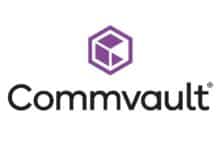Harshavardhan Kathaley, Director, Channel Sales (India & SAARC), Juniper Networks shares the company’s channel strategies for 2020
What have been the key highlights of 2019 and how 2020 will be an important year for the IT channel industry?
The year 2019 saw secured, automated IT infrastructure with applications running across a multi-cloud environment becoming the new norm. IT, BFSI, government, and telcos and internet service providers (ISPs) are some of the sectors that prioritised this trend ahead of the competition. These sectors will continue to seek other opportunities to stay ahead of the curve especially in the wake of COVID-19. For example, IT companies will look at prioritising multi-cloud adoption, artificial intelligence and automation, while the BFSI industry will look at a data centre refresh and SD-WAN.
Similarly, telcos and ISPs will be looking at introducing multi-cloud architectures and automation as they transition into the 5G era. Government projects that are part of the Digital India programme will continue to make strides in innovations to meet the vision of transforming the country into a digitally empowered society and knowledge economy.
Given the ongoing outbreak, there will be an accelerated focus and more investments in the healthcare sector, throughout every aspect of that industry – from hospitals to pharmaceutical companies, to essential commodities production and distribution, to retail and e-commerce, among others.
The government is expected to lead this charge in India, followed by the private sector. Furthermore, ISPs have witnessed unprecedented increase in demand due to the recent work-from-home practices, which is also expected to have an impact on future work culture.
What are the top three technology trends that the channel community should be focusing on, and why?
The channel community should focus on keeping abreast of the technology trends that their enterprise customers expect to embrace in 2020 and beyond, and ensure they are able to meet these demands.
Automation will increasingly become a priority as enterprises continue to look for ways to improve networking efficiency and performance. One area that is likely to have significant impact would be the introduction of bots. This can range from health bots, peering bots, or even testing bots, which are all aimed at automating simple tasks and augmenting human capabilities.
One more trend we could see includes play books that are customised specifically to customer requirements. Furthermore, an increased adoption of technologies such as SD-LAN and campus networks with EVPN and VXLAN, as well as a shift towards multi-cloud architectures are few additional developments we might see.
Lastly, AI will be a major priority as well – across areas such as wired and Wi-Fi connectivity, as well as security. AI presents new opportunities to drive improvements in operations and user experiences amidst the unpredictability of diverse device types, unknown guest and device connections, and hybrid WANs.
What are the top channel directions your company has set for partners, and where should partners invest to be aligned with these directions?
While Juniper Networks is accelerating network innovation with AI, partners continue to play an important role in delivering this experience to our customers. Our plan is to help our partners drive growth through new business and customer expansion, while focusing on simplicity.
An overview of Juniper’s enhanced partner program provides:
- New specialisations: With Juniper’s recent acquisition of Mist Systems, the new joint Juniper-Mist Specialisation enables partners to deliver AI solutions into the enterprise, while the new SaaS and managed services specialisations are designed to incent and enable partner transformation into recurring revenue models. Partners can choose their specialisation based on their competitive differentiation and unique business models.
- Incentives and rewards: New incentive programmes are designed to help partners who are co-investing with Juniper to grow their enterprise business: incentives focused on driving growth of Mist and Juniper solutions and paying double-digit rebates on growth technologies such as software, cloud and SD-WAN. Additionally, Juniper is making incremental investments in partners who invest in building technical, sales and service expertise in Juniper technologies. As our partners stack up their specialisations, they earn stackable rebates.
- Demand creation: Juniper is providing programmes and campaigns, as well as joint marketing funds, to create a demand for new business and to expand existing accounts. Our partners have access to on-demand, customisable and turn-key marketing campaigns focused on differentiated product solutions and targeted vertical segments in the enterprise.
- Sales enablement: To help partners upskill in emerging areas like AI, cloud, wired assurance and managed services, Juniper is providing a new sales enablement curriculum to accelerate partner success.
In line with the recent measures that governments have put in place to curtail the spread of COVID-19, Juniper has implemented measures to maintain the safety of our partners. For example, sales enablement and training sessions for this period will delivered virtually.














